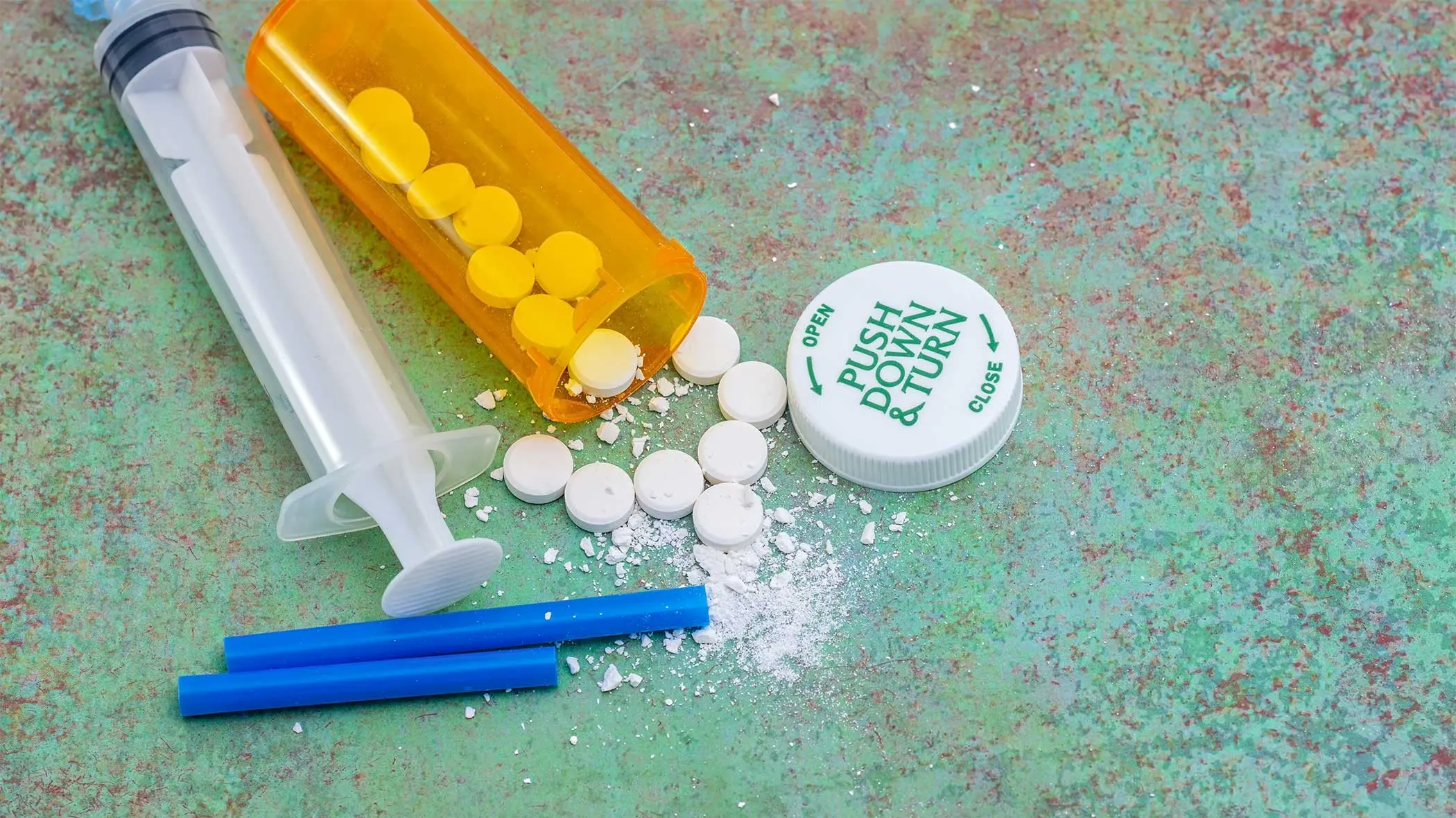
Opioid abuse can occur in many forms. The most common methods of opioid use include injecting, oral ingestion, smoking, and snorting.
With such a wide variety of opioids that people can abuse, the methods of ingestion can severely alter effects and produce negative effects from just taking the drugs.
Opioid use that delivers the substance to the system the most rapidly (injection, smoking, snorting) can cause very intense highs and lead to addiction and dependence.
The general risks of opioid abuse, including deadly overdose from respiratory depression, remain the same regardless of a person’s chosen method of ingestion.
Forms Of Opioid Drug Abuse
There are many methods of opioid administration that are typically used for opioid ingestion — they include the following methods:
Smoking Opioids
Smoking opioids delivers drugs to the bloodstream quickly through the lungs. A person may inhale fumes from powdered opioids like heroin, or from fentanyl patches.
Smoking any drug causes damage to the lungs, nose, and throat. Smoking opioids can create lasting damage to these areas along with chronic breathing and pulmonary conditions.
Risks Of Smoking Opioids
People that smoke opioids may suffer from conditions like:
- upper respiratory infections
- persistent cough
- coughing up blood
- pneumonia
- COPD
- worsened asthma
- slowed breathing
Swallowing Pills Or Taking Sublingual Tablets
Many people ingest opioids orally because most prescription opioids are available in pill form.
While any opioid ingestion for the purpose of abuse is dangerous, there are minimal additional risks associated with taking prescription or non-prescription opioids orally.
Oral opioid ingestion is one of the “slowest” methods of opioid abuse and leads to a less immediate high than when the drugs are snorted, injected, or smoked.
For some prescription medications containing Suboxone, oral ingestion is the only way to experience an opioid effect without triggering immediate withdrawals.
This is because Suboxone (buprenorphine/naloxone) is meant to treat opioid use disorder.
Snorting Opioids
Snorting opioids is a relatively common first step that people taking prescription opioid pills use to increase the effects of opiates. Many others may abuse powdered heroin by snorting it.
Snorting opioid drugs causes a faster “rush” of a high than oral ingestion, although in many cases, this high is shorter-lasting.
Although crushing and snorting prescription opioids appears to only work to boost bioavailability, a person that snorts opioids regularly risks serious short- and long-term issues.
Risks Of Snorting Opioids
In most cases of chronic nasal insufflation, the person will experience at least one of the following effects.
Drugs like Norco, which contains acetaminophen, may cause necrosis of the nasal tissues with chronic snorting.
Some effects of opioid snorting include:
- frequent nose bleeds
- blood clots in the lungs
- damage to the mucous membrane
- damage to the nose and throat
- lung infections
- lung scarring
- nasal septum perforation
- inflamed lung tissue
- damage to the upper respiratory system
Injecting Opioids
People that use opioids do not commonly begin with injection, although it does happen. An opioid injection delivers the drug directly into a person’s bloodstream through a hypodermic needle.
And while this method is very common among people that chronically use heroin, it carries significant risks. Most notable is the risk of HIV/AIDS and Hepatitis A and B transmission due to dirty needles.
Other risks beyond general risks associated with opioid abuse are related to infection that can occur from regular drug injections.
Risks Of Injecting Opioids
Drug injection causes scarring and can collapse blood vessels that are commonly used for injection.
People that inject drugs like heroin are at an increased risk of infection due to impurities in the drug, unsanitary needles, and dirty injection sites.
Some risks of intravenous opioid injection include:
- abscesses
- track marks
- endocarditis (inflammation of the heart)
- gangrene and osteomyelitis (tissue and bone death) requiring
- amputation
- blood clots (from impurities in the drug)
Plugging Opioids
One of the least common methods of drug ingestion is rectal administration, or plugging. This method allows for fast drug absorption through delicate rectal tissues and efficient delivery.
However, the discomfort of administration and cultural taboo makes this method less common. It also carries uncomfortable physical effects.
Risks Of Plugging Opioids
People that plug opioids may not want to risk the effects of injection, snorting, or smoking, but want a similarly fast high, and potent drug action.
People that take opioid drugs may not take the necessary steps to lubricate and apply opioid drugs in a sterile manner, which can lead to infection.
Similarly, the repeated insertion of rough applicators or sharp crystalline powders into the rectum may cause cuts.
Effects of rectal opioid abuse include:
- diarrhea
- rectal bleeding
- increased risk of infection
- increased risk of overdose
Getting Help For Opioid Addiction
If opioid addiction has affected your life or the life of somebody close to you, there are resources available. Call our helpline to learn more about the best recovery facilities for your needs.
Our treatment specialists can help you navigate the process and find the right inpatient and outpatient treatment programs. Every person’s needs vary, but for many, medically-assisted detox combined with therapy is effective.
It’s never too late to get help. Call today to get started!
Addiction Resource aims to provide only the most current, accurate information in regards to addiction and addiction treatment, which means we only reference the most credible sources available.
These include peer-reviewed journals, government entities and academic institutions, and leaders in addiction healthcare and advocacy. Learn more about how we safeguard our content by viewing our editorial policy.
- Centers for Disease Control and Prevention — Opioid Overdose
https://www.cdc.gov/drugoverdose/index.html - National Institute on Drug Abuse – America’s Addiction to Opioids: Heroin and Prescription Drug Abuse
https://www.drugabuse.gov/about-nida/legislative-activities/testimony-to-congress/2016/americas-addiction-to-opioids-heroin-prescription-drug-abuse - U.S. National Institute on Drug Abuse (NIDA) –– Health Consequences of Drug Misuse
https://www.drugabuse.gov/drug-topics/health-consequences-drug-misuse/respiratory-effects - U.S. National Library of Medicine: MedlinePlus — Opioid Addiction
https://medlineplus.gov/genetics/condition/opioid-addiction/#causes - U.S. National Institute on Drug Abuse (NIDA) — Opioids
https://www.drugabuse.gov/drug-topics/opioids - ScienceDirect — Rectal Administration
https://www.sciencedirect.com/topics/medicine-and-dentistry/rectal-administration

